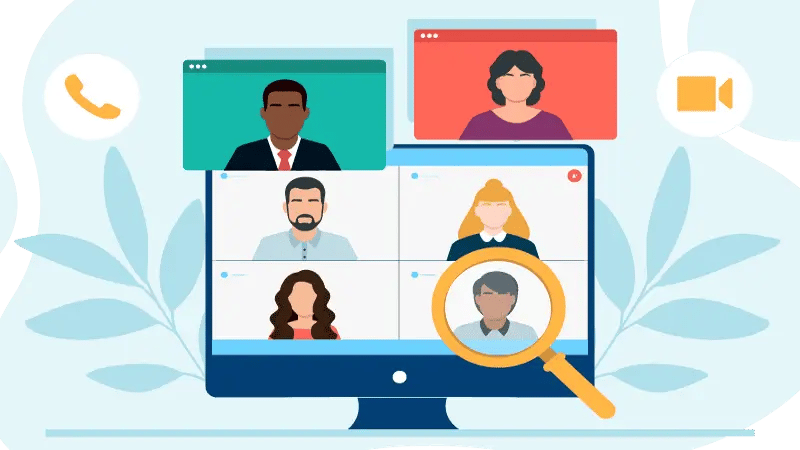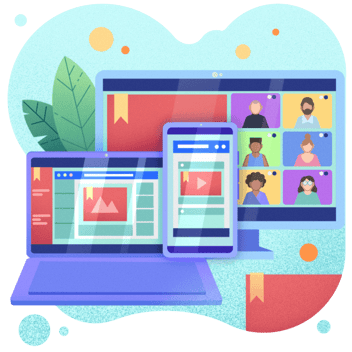Webinars have become incredibly popular for businesses to engage with potential customers, promote their brands, and showcase their expertise. They offer an opportunity to educate, inform, and entertain your audience, all while increasing your visibility and building your reputation.
But before you hit the "broadcast" button, an important aspect is identifying the right prospects to attend your webinar.


Successful webinar campaigns include the following steps.
Define Your Target Audience
Before you start identifying prospects for your webinar, you must define your target audience. The more you know about your target audience, the easier it will be to identify prospects that are a good fit for your webinar.
1. Determine your webinar topic and target market.
The first step is to determine your webinar topic and target market. Ask yourself, what is the main focus of your webinar, and whom is it aimed at? This will help you narrow your target audience and identify their needs and interests. This is also helpful when identifying which webinar platform suits your business needs.
Example - If your webinar is about creating a successful social media strategy, your target audience could be small business owners, social media managers, or marketing professionals.
2. Create a customer persona to identify the characteristics of your ideal attendee.
Once you have defined your target market, creating a customer persona is next. A customer persona is a fictional character that represents your ideal attendee. It includes demographic information such as age, gender, income, education level, job title, and industry. It also includes psychographic information such as personality, values, interests, and behaviors.
Creating a customer persona helps you understand your target audience and identify their pain points and challenges.
Example - If your target audience is small business owners, their pain point could be a lack of time or resources to effectively manage their social media accounts.
3. Understand the pain points and challenges of your target audience.
Understanding your target audience's pain points and challenges is crucial in identifying prospects for your webinar. If you can solve their pain points, they are more likely to attend your webinar.
Example - if your target audience is struggling with creating a successful social media strategy, you can offer a webinar that provides them with practical tips and strategies to overcome this challenge.
Use Data to Identify Prospects
Data is a valuable tool that can help you to identify prospects for your webinar. You can better understand your target audience and their behavior by analyzing data from various sources.
Leverage Your Existing Email List and Social Media Followers
One of the easiest ways to identify prospects for your webinar is to leverage your existing email list and social media followers. These people have already shown an interest in your brand and are more likely to attend your webinar.
It's also helpful to send a newsletter to your email list promoting your webinar and create social media posts that link back to your registration page. You can also create a separate landing page on your website for your webinar and include a sign-up form to capture leads.
Utilize Keyword Research
Keyword research is a powerful tool that can help you identify potential webinar attendees. Using tools like Google AdWords or SEMRush, you can identify keywords and phrases your target audience is searching for.
For example, suppose your webinar is about social media marketing. In that case, you can use keyword research to find relevant terms such as "social media strategy," "social media advertising," or "social media analytics."
Once you've identified these keywords, you can optimize your landing page and registration form to include them. This will help your webinar to appear higher in search engine results, making it easier for potential attendees to find you.
Use Website Analytics
Website analytics can provide valuable insights into your audience's behavior, allowing you to identify potential attendees for your webinar. You can better understand what content resonates with your audience by analyzing page views, bounce rate, and time spent on the site.
Use this data to identify pages on your website that receive the most traffic and create a pop-up or banner promoting your webinar. You can also use retargeting ads to reach people who have visited your website but haven't signed up for your webinar yet.
Leverage Online Communities
Social media is a powerful tool for promoting your webinar and identifying potential attendees. With billions of active users, social media platforms offer an enormous audience to tap into. Here's how you can use social media to identify prospects for your webinar:
1. Identify relevant hashtags and join online communities related to your webinar topic. This will help you connect with people interested in your subject matter and engage with them.
If your webinar concerns social media marketing, use hashtags such as #socialmedia, #digitalmarketing, or #contentmarketing to reach a broader audience. Joining online communities such as Facebook groups or LinkedIn groups related to your topic can also help you to identify potential attendees.
2. Promote your webinar on social media by creating posts highlighting the benefits of attending your webinar. Use eye-catching visuals and compelling copy to grab your audience's attention and encourage them to sign up.
You can also use social media advertising to reach a wider audience. Platforms like Facebook, Instagram, and LinkedIn offer targeting options that allow you to reach people based on their interests, demographics, and behavior.
3. Engage with your audience on social media by responding to comments and messages, sharing valuable content, and asking for feedback. This will help you to build a relationship with your audience and create a sense of community around your brand.
Utilize Paid Advertising
Paid advertising is a great way to reach a wider audience and identify potential attendees for your webinar. Here are some of the most effective ways to use paid advertising to promote your webinar:
-
Google Ads is a powerful tool for promoting your webinar and identifying potential attendees. Plus, you can create YouTube ads that appear before or during videos related to your topic.
-
Facebook Ads offer a range of targeting options that allow you to reach people based on their interests, demographics, and behavior. You can create ads that appear in people's news feeds or in the right-hand column of the desktop site, including Instagram ads that appear in people's feeds or stories or Messenger ads that appear in people's Messenger inboxes.
-
LinkedIn Ads are a great way to reach a professional audience and promote your webinar to people in specific industries or job titles. You can create ads that appear in people's LinkedIn feeds or in the right-hand column of the desktop site, as well as sponsored InMail ads that appear in people's LinkedIn inboxes.
Seize the Webinar Wave: Prospecting Success Awaits
Identifying prospects for your webinar is a crucial step in ensuring its success. Using these strategies, you identify and engage with potential attendees and increase your registration and attendance rates. In no time, you'll be well on your way to hosting a successful webinar that provides value to your audience and helps to grow your business or brand. Happy prospecting!









.webp?width=352&name=Blog_WBM_Platforms%20for%20Engaging%20Your%20Audience%20(1).webp)

Leave a Comment